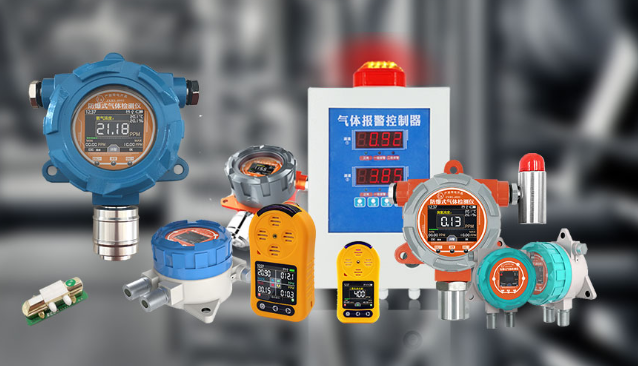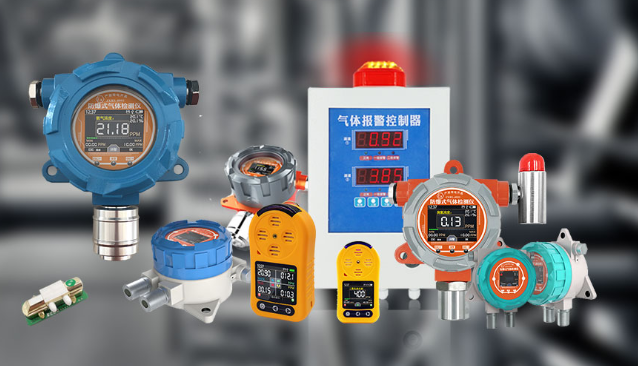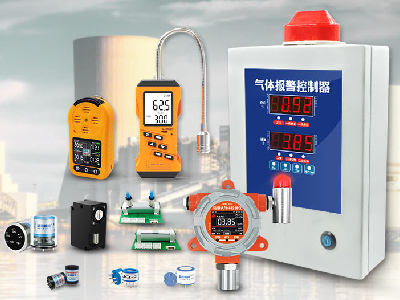
Combustible Gas Detectors: Essential Tools for Ensuring Safety
In recent years, the importance of combustible gas detectors in ensuring workplace safety has gained significant attention.

In recent years, the importance of combustible gas detectors in ensuring workplace safety has gained significant attention.
Industrial settings, such as manufacturing plants, refineries, and chemical processing facilities, are known to handle and store various types of combustible gases, including methane, propane, hydrogen, and others. While these gases are essential for many industrial processes, they can also pose serious safety risks if not handled properly. Gas leaks can lead to explosions, fires, and exposure to toxic gases, causing harm to workers, damage to property, and even loss of life.
In recent years, the importance of combustible gas detectors in ensuring workplace safety has gained significant attention. These devices are designed to detect the presence of combustible gases in the air and provide early warnings, allowing workers to take appropriate measures to mitigate risks and prevent accidents. In this article, we will explore how combustible gas detectors are saving lives by detecting hazardous gas leaks and preventing workplace accidents. We will also discuss the key features of combustible gas detectors and their role in ensuring safety in industrial settings.

Gas leaks are a common occurrence in industrial settings and can be caused by various factors, such as equipment malfunction, poor maintenance, or human error. Gas leaks can be particularly dangerous as they are often invisible, odorless, and can accumulate in confined spaces, posing serious risks to workers.
Combustible gas detectors play a crucial role in detecting hazardous gas leaks and providing early warnings to workers. These devices work by measuring the concentration of combustible gases in the air and triggering an alarm when the levels exceed a pre-set threshold. The early detection of gas leaks allows workers to evacuate the area, shut down equipment, and take appropriate measures to prevent further escalation of the situation.
One of the key advantages of combustible gas detectors is their ability to detect gas leaks in real-time, allowing for immediate response. Many modern combustible gas detectors are equipped with advanced sensing technologies, such as catalytic bead sensors, infrared sensors, or electrochemical sensors, which are highly sensitive and can detect even low levels of gas concentrations. These sensors can quickly respond to changes in gas concentrations and provide accurate readings, ensuring reliable detection of gas leaks.
In addition to real-time detection, combustible gas detectors also offer other features that enhance their effectiveness in saving lives. For example, some detectors come with built-in audible and visual alarms that can be easily noticed by workers, even in noisy industrial environments. These alarms are designed to be loud and attention-grabbing, alerting workers to the presence of gas leaks and prompting them to take immediate action.
Furthermore, many combustible gas detectors are also equipped with data logging capabilities, allowing for the collection and analysis of gas concentration data over time. This data can be used for monitoring gas levels, identifying trends, and assessing the effectiveness of safety measures. Some detectors also come with wireless connectivity, enabling remote monitoring and control, which can be especially useful in large industrial facilities.

Workplace accidents resulting from gas leaks can have serious consequences, including injuries, fatalities, and property damage. The use of combustible gas detectors can play a crucial role in preventing such accidents and ensuring workplace safety.
One of the main ways in which combustible gas detectors help prevent workplace accidents is by providing early warnings, allowing workers to take prompt actions. When a combustible gas detector detects the presence of gas above the pre-set threshold, it triggers an alarm, alerting workers to the potential danger. This prompt notification enables workers to quickly evacuate the area, shut down equipment, and implement emergency response procedures, preventing further escalation of the situation and mitigating the risks associated with gas leaks.
Furthermore, combustible gas detectors also help prevent workplace accidents by promoting proactive safety measures. Regular use of combustible gas detectors encourages a proactive approach to gas leak prevention, as workers are constantly aware of the potential risks and are motivated to take necessary precautions. This includes conducting regular equipment inspections, implementing proper maintenance procedures, and ensuring that proper ventilation and gas detection systems are in place. By consistently monitoring gas levels and taking proactive measures, combustible gas detectors help prevent workplace accidents caused by gas leaks.
Another important aspect of using combustible gas detectors in preventing workplace accidents is their ability to monitor gas concentrations in confined spaces. Confined spaces, such as storage tanks, vessels, and pipelines, are particularly hazardous as they can trap gases, leading to high concentrations and increased risks of explosions or asphyxiation. Combustible gas detectors equipped with sensors specifically designed for confined spaces can accurately measure gas concentrations in these areas and provide early warnings to workers, allowing them to take appropriate precautions and avoid accidents.
In addition, combustible gas detectors also play a vital role in complying with safety regulations and standards. Many industrial facilities are required by law to have gas detection systems in place to ensure workplace safety. Combustible gas detectors that meet industry standards and regulations, such as those set by organizations like the Occupational Safety and Health Administration (OSHA) and the National Fire Protection Association (NFPA), help facilities comply with these requirements and maintain a safe working environment.